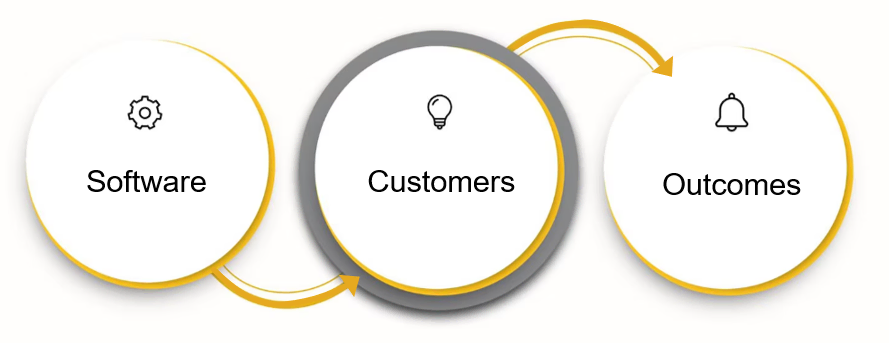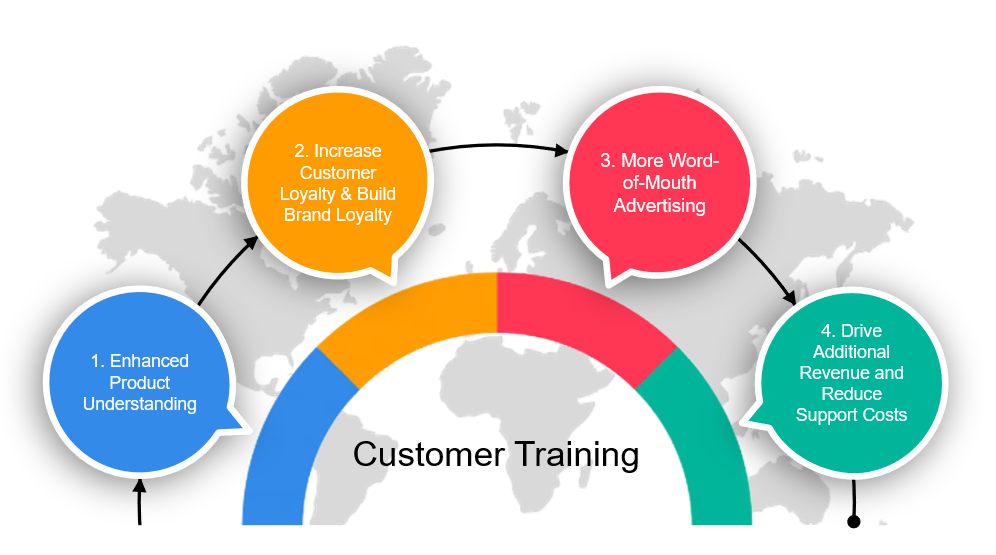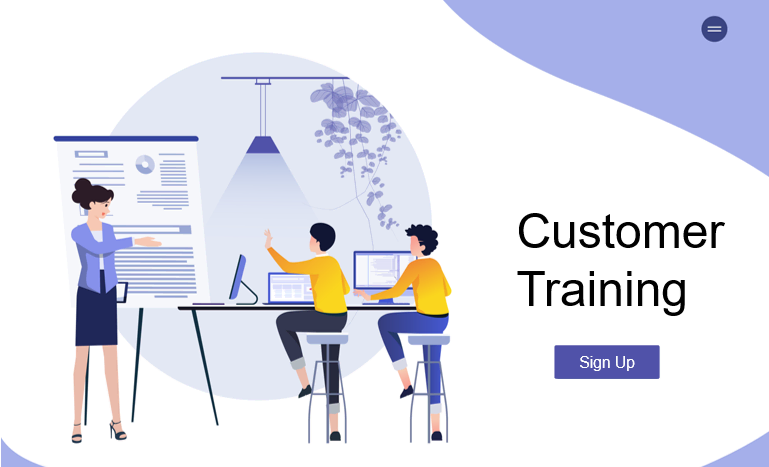Customer training empowers businesses to equip their clients with the knowledge and skills necessary to optimize product or service potential, fostering success and satisfaction.
In the dynamic landscape of business, organizations strive to provide exceptional products and services to their customers. However, the journey doesn’t end with the sale. To truly succeed in today’s competitive marketplace, businesses recognize the critical importance of customer training.
Table of Contents
- Enhanced Product Understanding
- Increase Customer Loyalty & Build Brand Loyalty
- More Word-of Mouth Advertising
- Save Time and Reduce Support Costs
How to Build a Successful Customer Training Program
- Set Program Goals to Meet Your Customers’ Needs
- Select the Appropriate Technology Solution
- Create Engaging Content
- Select a Training Delivery Platform
Customer Training: Definition
Simply put, customer training refers to the process of providing education, instruction, and resources to customers to help them understand and effectively use a product or service.
Gain a rapid understanding of the customer training process by referring to the image below:

Customer Training vs Customer Support
Many people may be confused at some points between customer training and customer support. There is no need to worry because the table below offers a clear overview of the key differences between these two terms, helping to dispel any confusion.
| Customer Training | Customer Support | |
| Time | Before customers encounter issues or challenges | After customers encounter difficulties or require troubleshooting |
| Aim | To equip them with the necessary knowledge and skills to use a product or service effectively | To assist them in resolving issues, addressing concerns, and providing guidance to ensure their satisfaction with a product or service. |
| Forms | Online courses/eLearning, documentation and user manual, video tutorials, webinars, on-site training | Phone support, email support, live chat, online meetings, community forums, social media support, remote assistance |
In brief, a notable distinction between customer training and customer support lies in its proactive nature, as training is offered to customers prior to their immediate needs. For instance, upon a customer’s initial product or service sign-up, the first training touchpoint should promptly provide training, even before they start using your product.
Benefits of Customer Training
Customer training offers numerous benefits for both customers and businesses. From improved product adoption and enhanced customer satisfaction to reduced support costs and increased customer retention, the benefits of customer training are far-reaching. Discover how customer training empowers both customers and businesses alike, fostering a mutually beneficial relationship built on knowledge, proficiency, and exceptional experiences.

1. Enhanced Product Understanding
When customers have a clear grasp of how to effectively use a product, they can unlock its full potential, maximizing its value and benefits. Enhanced product understanding leads to improved efficiency, increased productivity, and the ability to address challenges more effectively. Moreover, it enables customers to explore advanced or lesser-known features that they might have overlooked, thereby expanding their capabilities and deriving greater value from their investment. Ultimately, customer training empowers users to become proficient and confident in their product usage, resulting in higher customer satisfaction and loyalty.
2. Increase Customer Loyalty & Build Brand Loyalty
An important benefit of customer training is its ability to increase customer loyalty and build brand loyalty. By investing in training programs, businesses demonstrate their commitment to customer success and showcase their dedication to helping customers achieve their goals. On the other hand, when customers receive valuable education and support from the company, they develop a stronger connection and trust in the brand. Well-trained customers feel more confident in their ability to utilize the product or service effectively, leading to a higher level of satisfaction and overall loyalty.
3. More Word-of-Mouth Advertising
When customers receive comprehensive training that empowers them to use a product or service effectively, they become advocates for the brand. Satisfied and knowledgeable customers are more likely to share their positive experiences with others, whether through personal conversations, online reviews, or social media. They become brand ambassadors, willingly promoting the business to their networks and recommending it based on their training and success. This organic and authentic word-of-mouth advertising is highly valuable. The reason is that it carries a higher level of trust and credibility than traditional marketing efforts. By investing in customer training, businesses not only equip customers with the skills they need but also create a network of enthusiastic supporters who actively contribute to the growth and reputation of the brand. This presents opportunities for upselling and cross-selling, driving additional revenue for the business.
4. Save Time and Reduce Support Costs
When customers are well-trained on how to use a product or service, they are more likely to have positive experiences. They can troubleshoot issues on their own, reducing the burden on customer support teams. Consequently, this boosts overall customer satisfaction and results in time and cost savings for businesses by minimizing the need for additional support staff or resources.
The aforementioned benefits of customer training are significant for both customers and businesses. However, the question remains: Is building a customer training program an easy task? The upcoming section will delve into the details of this matter, exploring the challenges and considerations involved in constructing an effective customer training program.
How to Build a Successful Customer Training Program
A well-designed training program equips customers with the knowledge and skills needed to effectively use a product or service, leading to increased satisfaction, loyalty, and overall success. However, developing an effective customer training program requires careful planning and execution. Let’s dive into the world of building a successful customer training program and unlocking the potential for customer empowerment and business growth.

1. Set Program Goals to Meet Your Customers’ Needs.
To effectively meet customers’ needs in customer training, it is crucial to establish clear program goals. These goals serve as guiding principles that align the training program with the specific requirements and expectations of the customers. By thoroughly understanding the customers’ needs, organizations can tailor their training programs to address the challenges and objectives of their customer base.
Program goals should be SMART (Specific, Measurable, Achievable, Relevant, and Time-bound) to ensure clarity and focus. They should encompass aspects such as improving customer satisfaction, enhancing product knowledge, developing customer service skills, and fostering long-term relationships. By setting well-defined program goals, organizations can deliver training experiences that are relevant, impactful, and meet and exceed customers’ expectations.
2. Select the Appropriate Technology Solution
After establishing the goals and objectives for your customer training program, the next crucial step is selecting the appropriate technology to construct and implement it effectively.
There are various technologies available to facilitate the process. Some commonly used technologies include e-Learning authoring tools, virtual classrooms or web conferencing platforms, interactive e-Learning modules, multimedia production tools, and customer training portals or websites. These technologies enable businesses to create, deliver, and track training materials, engage with customers remotely, provide interactive learning experiences, and measure the effectiveness of the training program. Therefore, choosing the right technology for your customer training program is essential to ensure seamless delivery, engagement, and successful outcomes.
To help you easily select the right training technology, don’t forget to weigh out the following questions.
Key Questions
- Does the technology provide the necessary features and functionalities to deliver effective training content?
- Is the technology user-friendly and intuitive for both trainers and trainees?
- Can the technology accommodate different learning styles and formats, such as video, interactive modules, quizzes, and assessments?
- Is the technology compatible with your existing infrastructure and systems?
- What are the security measures in place to protect sensitive customer data?
- Does the technology provide analytics and reporting capabilities to track the progress and effectiveness of the training program?
- What is the total cost of ownership, including licensing fees, implementation, and maintenance costs?
For example, ActivePresenter, a leading eLearning authoring tool designed to streamline your eLearning creations.
Feel free to click here and access the download page for ActivePresenter, where you can give it a try firsthand.

3. Create Engaging Content
Creating engaging content is a crucial aspect of a successful customer training program. To create engaging content, it is important to consider the needs and preferences of the target audience. This includes using a variety of multimedia elements such as videos, images, infographics, and interactive elements. Additionally, incorporating real-life examples, case studies, and practical exercises helps customers connect with the content on a practical level. Clear and concise language should be used to convey information effectively. While incorporating storytelling techniques can make the content more relatable and memorable. By focusing on creating engaging content, businesses can ensure that customers remain interested, motivated, and actively involved in the training process. This leads to a higher level of knowledge retention and application of learned skills.
4. Select a Training Delivery Platform
There are multiple training delivery platforms in the markets. They are LMS, LXP, CMS, virtual classroom platforms, video-based learning platforms, web-based learning platforms, and so on. By opting for a versatile platform, businesses can adapt their training methods to suit the needs and preferences of their customers. Therefore, ensuring an engaging and effective learning experience. Additionally, a flexible training delivery platform enables easy updates and scalability as the training program evolves over time. Ultimately, selecting a suitable training delivery platform empowers businesses to deliver training content in a way that best suits their customers’ learning styles and requirements.
Conclusion
In conclusion, customer training is not just a necessary component of business operations but also a strategic investment for long-term growth. By prioritizing customer training, businesses can unlock a range of benefits, including enhanced product understanding, increased customer loyalty, more word-of-mouth advertising, and improved overall business performance. As businesses continue to evolve in a dynamic marketplace, prioritizing customer training as a strategic investment becomes increasingly essential to stay ahead and thrive. By understanding the importance of customer training and leveraging its benefits, businesses can pave the way for sustainable growth, exceptional customer experiences, and a stronger position in the market.
See Also:
Outsourcing eLearning Content Creation: Why and When?
Rapidly Create Employee Onboarding Process with These Methods